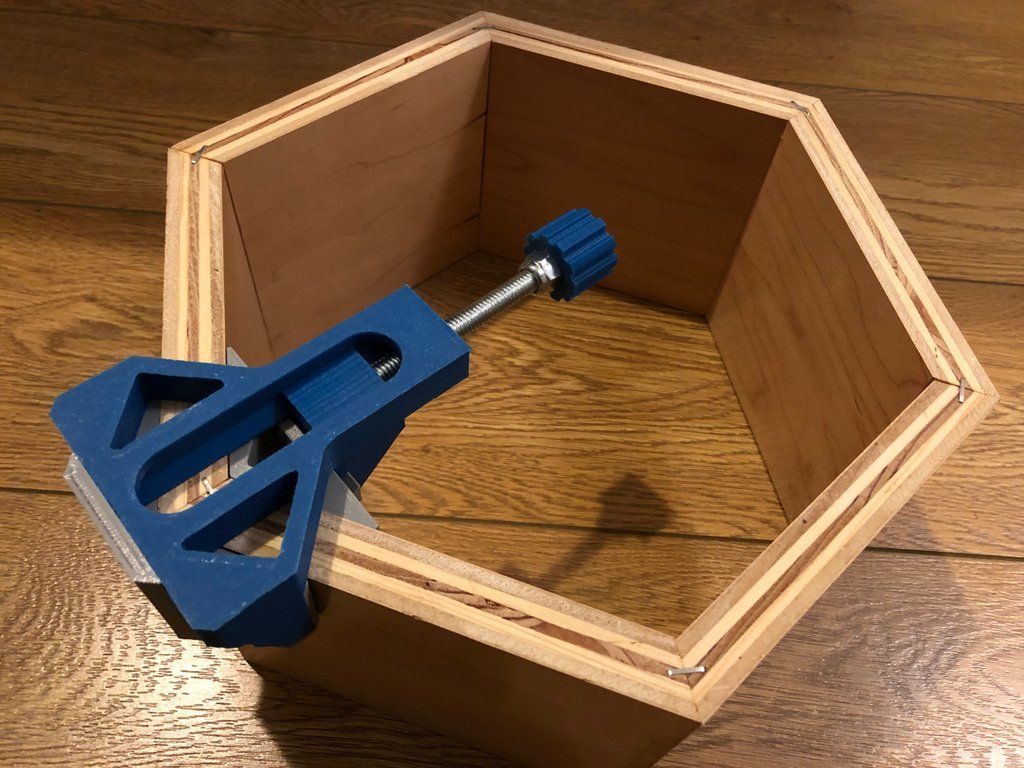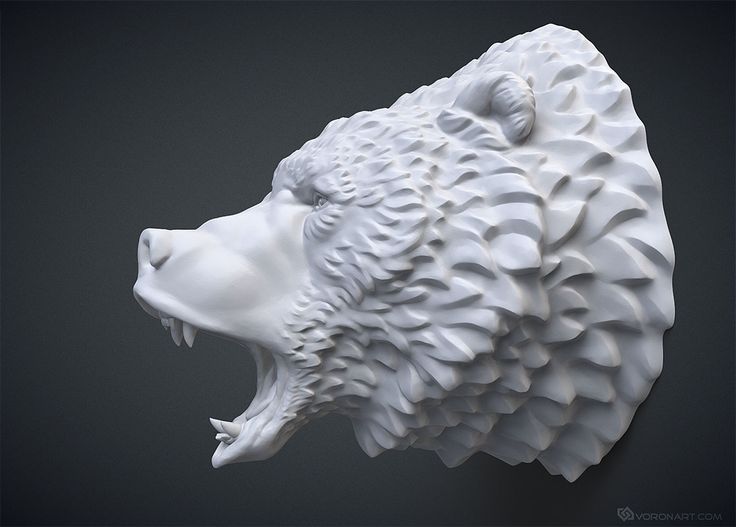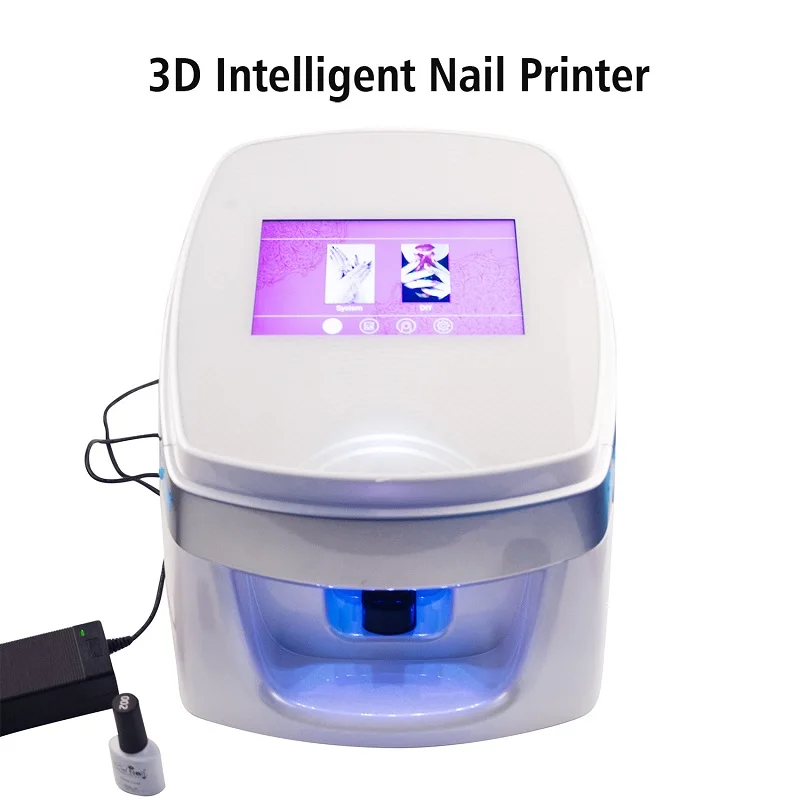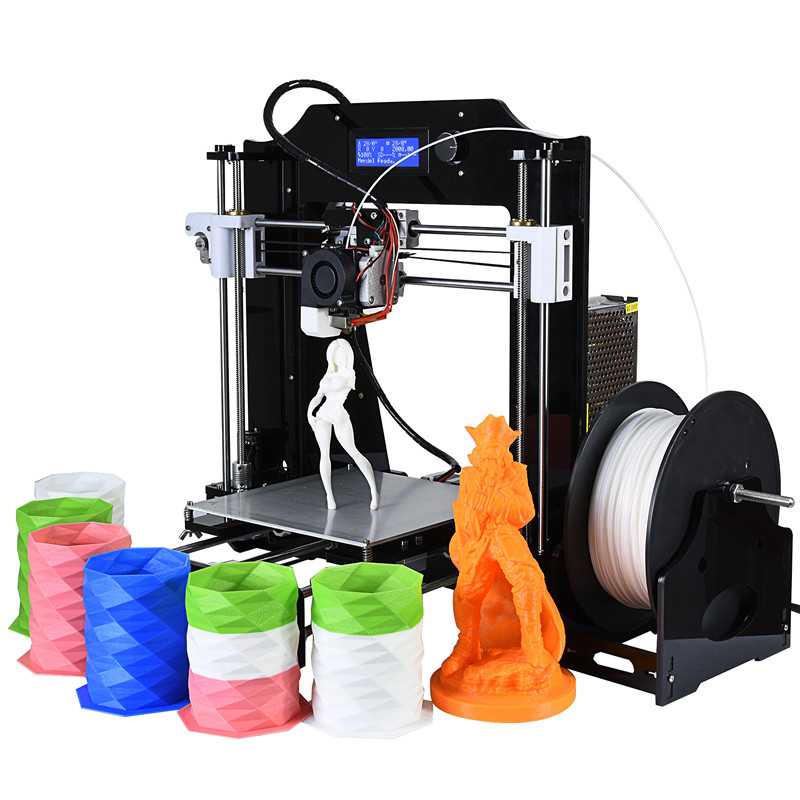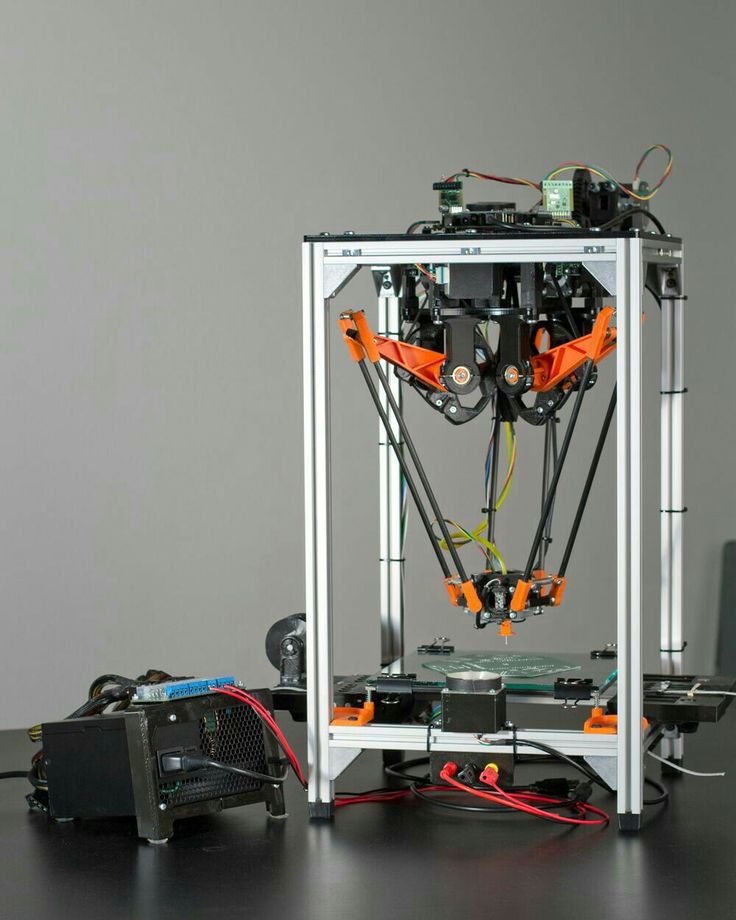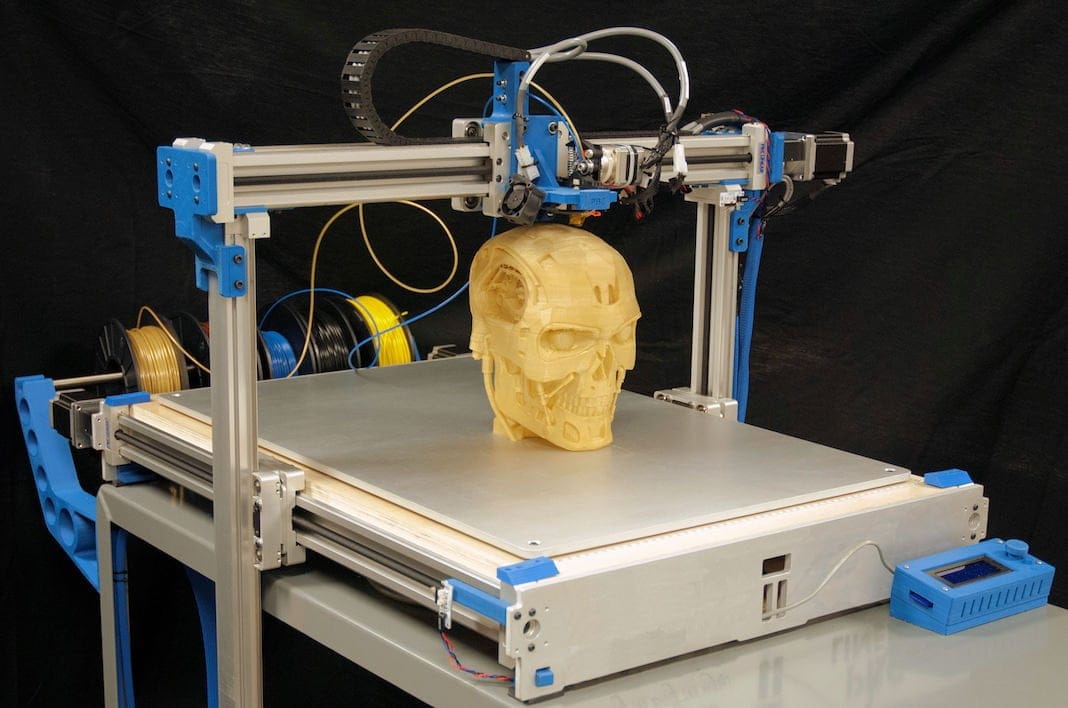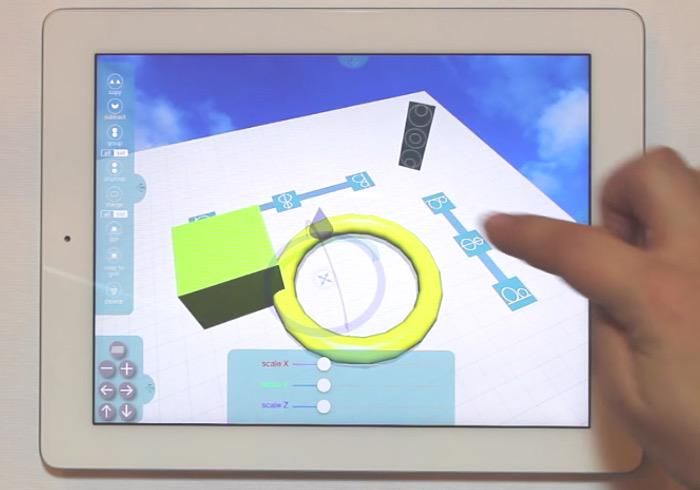3D printer woodworking tools
3D printed workshop equipment: tools and jigs
As we promised in the recently published article on various 3D printed workshop organizers, today we return with the second part, this time on actual 3D printed jigs and tools.
Similar to the first article, we want to focus on practical things that really make sense to 3D print instead of just buying them in a DIY store. Therefore, all of them should be reasonably easy and inexpensive to print. Most of the tools are very simple, but more often than not, these are the “unsung heroes” of the everyday work, rather than some complicated gimmicks.
Keep in mind when comparing 3D printed and bought stuff, apart from availability, there is always the added value of customizing the color, size and function.
As you can see below, it is a very broad topic, so consider this short article just as a list of examples. We would love to expand it with your suggestions!
Anyway, we know you are here for the links and pics, not a wall of text, so without further ado, let’s present our picks 😉 Everything is freely downloadable from PrusaPrinters and has been printed and actually used by us. For your convenience, we also put all the prints together into a collection.
This Parallel marking tool helps to draw parallel lines, stick your pencil through one of the holes according to the distance you need to measure, and simply slide the tool along the edge of a plank or desk you are drawing on.
Screw measuring device, both for length and for gauge – using the cutouts on the side. For better readability, make the numbers in a different color, using the simple PrusaSlicer option of pausing the print and manually changing the filament.
Contour Duplicator – you can quickly “scan” a contour and copy it elsewhere by drawing along the outline with a pencil, to make a custom cutout, for example. Okay, this thing does look a bit gimmicky 🙂 But for the right job, it can be actually very useful.
A bevel gauge/angle finder for measuring and transferring angles.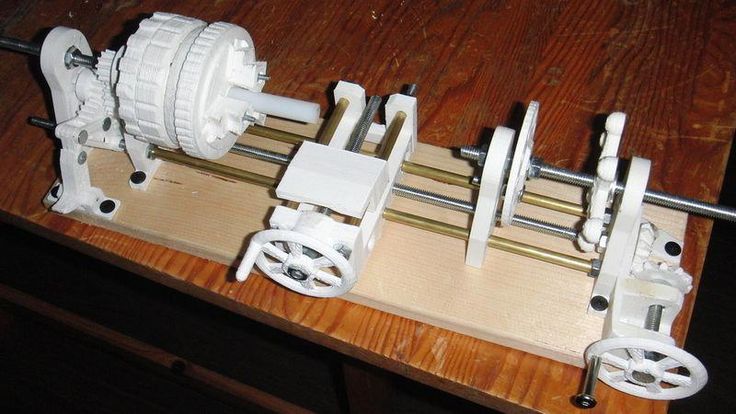 Can be used to quickly draw perpendicular or 45° lines.
Can be used to quickly draw perpendicular or 45° lines.
Corner clamp, a jig for gluing/screwing parts together at a right angle, for example when making frames. You can either use clamps to secure the planks to the jig (as in the second picture), and/or use two of the same jigs, both from the inner and outer sides.
Another aligning tool, a custom one for 18mm boards, for their easy edge-on-edge positioning and precise drilling.
This simple push stick elongates your reach and increases your safety when feeding material to a circular saw.
This tool helps cut radial corners. There are pockets for inserting bench vise arms. Multiple versions for different radiuses are available.
Painter’s pyramids are used as a platform for painting the sides of a board or plank without putting it directly on your table. There are three sizes available (and of course, you can further scale them as you wish). Btw, this tool is a good case-in-point for how popular can such simple, but well thought and executed designs become – as of now, there are more than 300 downloads.
Btw, this tool is a good case-in-point for how popular can such simple, but well thought and executed designs become – as of now, there are more than 300 downloads.
A model painting handle – when painting miniatures, you need a bulky handle to hold the painted piece without touching it and have both a firm and relaxed grip. The goal is to minimize strain on your hands, which can result in cramps and shaking, especially when working for several hours in a row. Btw, one of the surprising advantages of this handle over a commercially available alternative is the texture of 3D printed layers, which are actually comfortable to touch. The handle is adjustable for 20-40mm bases.
For scale model aircraft modelers, there is this painting stand, usable also for various detailing and checking/fixing the aircraft wing dihedral (i.e., both wings having the same angle against the fuselage). The crutches can be covered with felt pads to prevent scratching of the existing paint job.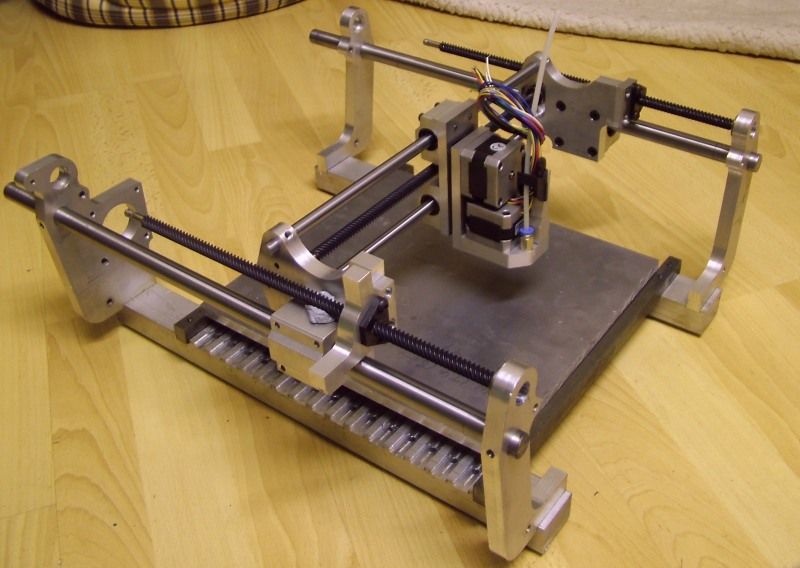
Last but not least, a thing just each and every one of us can use when assembling or servicing their 3D printer at least – handles for Allen keys, basically turning the fiddly metal bit into a comfy screwdriver. This is the design we like the most, probably, but several versions are available on PrusaPrinters, so feel free to search for more options.
That’s all, over and out for now. Enjoy our selection, and keep in mind we are looking forward to your suggestions to further expand this topic.
Happy printing!
3D Printing and Woodworking – A Perfect Combination
3D Insider is ad supported and earns money from clicks, commissions from sales, and other ways.
Before 3D printing, there was woodworking.
Woodworking has been one of the favorite hobbies of those who like to work with their hands. There was a certain fulfilling – perhaps even meditative – value to creating beautiful and useful things from planks of wood.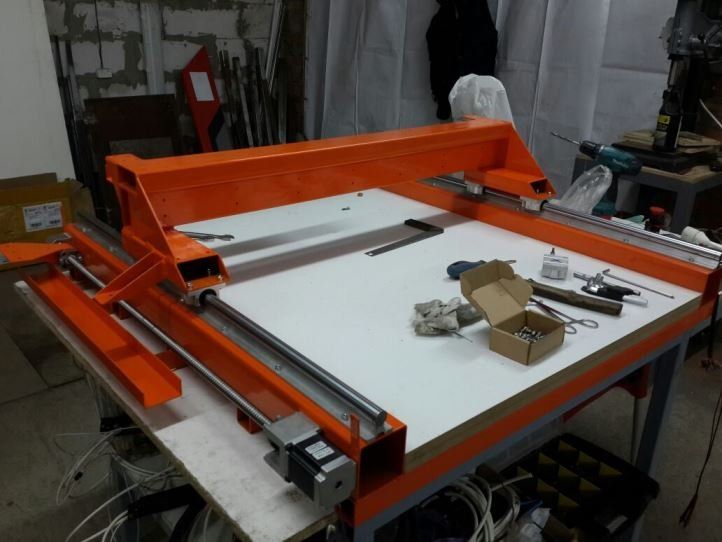
Some would describe 3D printing as the more modern version of woodworking. Although 3D printing demands different technical skills, the end goal is still to come up with something valuable out of raw materials.
If you’re interested in both, then there’s no need to pick just one. Woodworking and 3D printing are crafts that work incredibly well together.
3D printing vs. woodworking – key differences
Woodworking and 3D printing can be described as the two sides of the same coin. They are both manufacturing methods but go about using vastly different approaches.
Additive vs. subtractive
Woodworking is a classic example of subtractive manufacturing. This means that the final product is derived from a slab of raw material by chipping or cutting away the material that is not needed. This method inevitably generates more waste but produces finished parts that are mechanically stronger.
3D printing is the very defining example of additive manufacturing.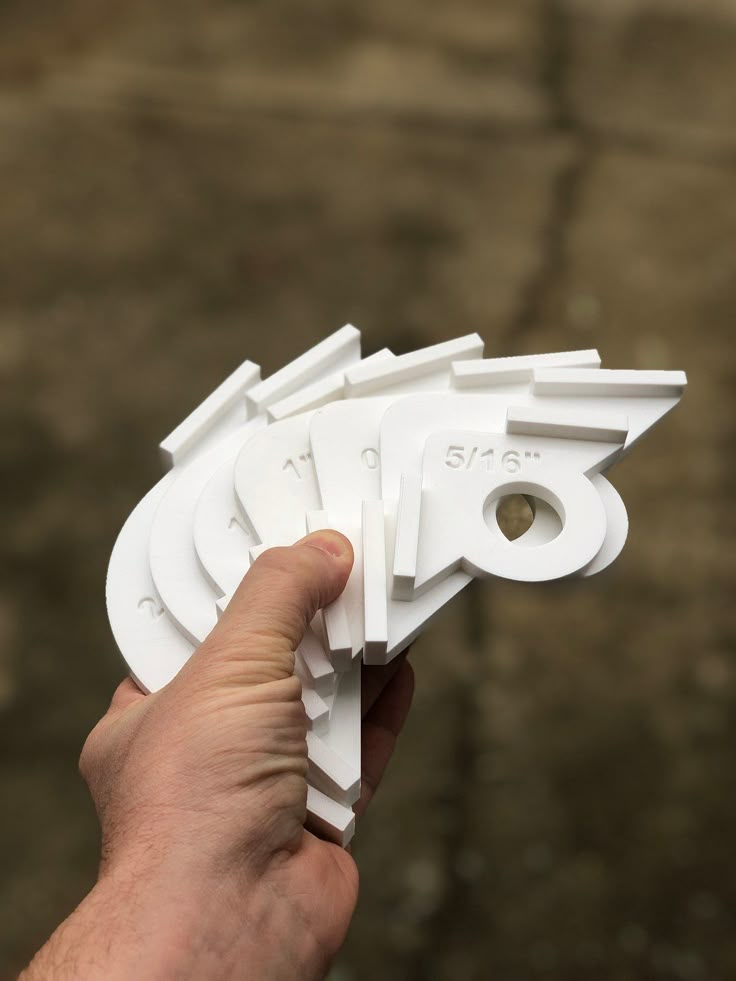 Instead of cutting away from a large block of material, a 3D printer product is built layer by layer. This method generates less waste but is also usually slower. An unfortunate consequence of 3D printing is that it is almost impossible to achieve the same mechanical integrity as a piece made via subtractive manufacturing.
Instead of cutting away from a large block of material, a 3D printer product is built layer by layer. This method generates less waste but is also usually slower. An unfortunate consequence of 3D printing is that it is almost impossible to achieve the same mechanical integrity as a piece made via subtractive manufacturing.
Cost
In terms of the equipment, woodworking would likely require much greater capital. Between the various types of power tools and hand tools you will need, you will probably have to spend between $500 to $1000. It will be even more expensive if you’re getting a CNC machine like a lathe or mill.
In contrast, 3D printing can be done with just a single 3D printer and a few basic hand tools. If you stick to entry-level 3D printers, you should not need to spend more than $500. 3D printers have gotten a lot less expensive in the last years, paving the way to the widespread use by hobbyists.
Skill level
Woodworking is an old-fashioned craft.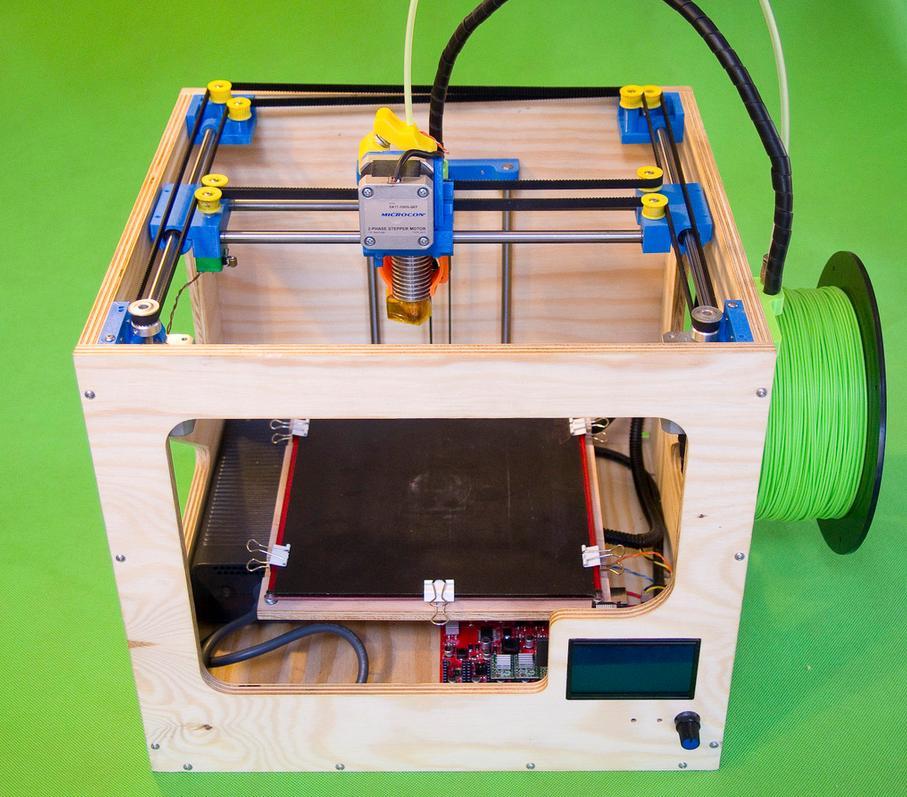 This means that it requires substantial training or experience, especially if you’re working with lots of power tools. Someone who has never worked with these tools before isn’t likely to be able to create a good wooden desk over a single weekend.
This means that it requires substantial training or experience, especially if you’re working with lots of power tools. Someone who has never worked with these tools before isn’t likely to be able to create a good wooden desk over a single weekend.
3D printers are much more beginner-friendly. Although there are complex algorithms involves in running a 3D printer, most of these happen behind the scenes and do not need to be bothered with by average users. Most desktop-scale 3D printers are designed specifically so that even pure beginners can start printing in just a few minutes.
Those who do CNC woodworking can adjust much easier to 3D printing. CNC technology, after all, is also based on digital 3D models. As we shall see later on, 3D printing can have a unique case for those who use CNC machines for manufacturing.
3D printed woodworking accessories
3D printing truly shines as a complementary craft to another hobby. This characteristic also applies to woodworking. You might have all the power tools set up, but there are so many ideas out there of “ad hoc” tools that are similarly useful. Here are some of the most popular:
You might have all the power tools set up, but there are so many ideas out there of “ad hoc” tools that are similarly useful. Here are some of the most popular:
Sanding sticks
Sanding tight spots in a wooden project can be challenging. You typically just wrap sandpaper around some arbitrary tool or just get your finger in there. This works eventually but is not very efficient.
These sanding sticks are designed to hold a strip of sandpaper in place with its clamps and thumbscrews. The sticks are available in various shapes and sizes, so you should not have a problem finding the one that you need. Although very simple, these sanding sticks can reduce the time and effort it takes to sand very small spaces.
Corner radius rounded corner template
Drawing the outline of a rounded corner on a wooden slab is easy. However, cutting away that rounded corner using a router takes considerably more skill.
This rounder corner template is designed to fit into any sharp corner and serve as the template for the router. The STL file contains nine different templates with varying corner radius values. The corner template will very briefly come in contact with the router, so it’s best printed with a thermally stable plastic like ABS or Nylon.
The STL file contains nine different templates with varying corner radius values. The corner template will very briefly come in contact with the router, so it’s best printed with a thermally stable plastic like ABS or Nylon.
Universal clamping blocks
Putting together corners whether they are mitered or have wider or narrower angles is hard because they cannot simply be clamped together. The common solution to this problem is to glue temporary clamping blocks to the pieces that form the corner. This takes so much time and adds unnecessary work.
With these 3D-printed universal clamping blocks, you can say goodbye to all those creative solutions. These clamping blocks have circular levers that can be clamped tight, regardless of angle. It’s a very simple contraption that you might be left wondering why you did not have such a tool in the first place.
Vice jaws
This is another simple but useful idea – plastic jaws that you can affix to your vice so that it does not damage more fragile materials.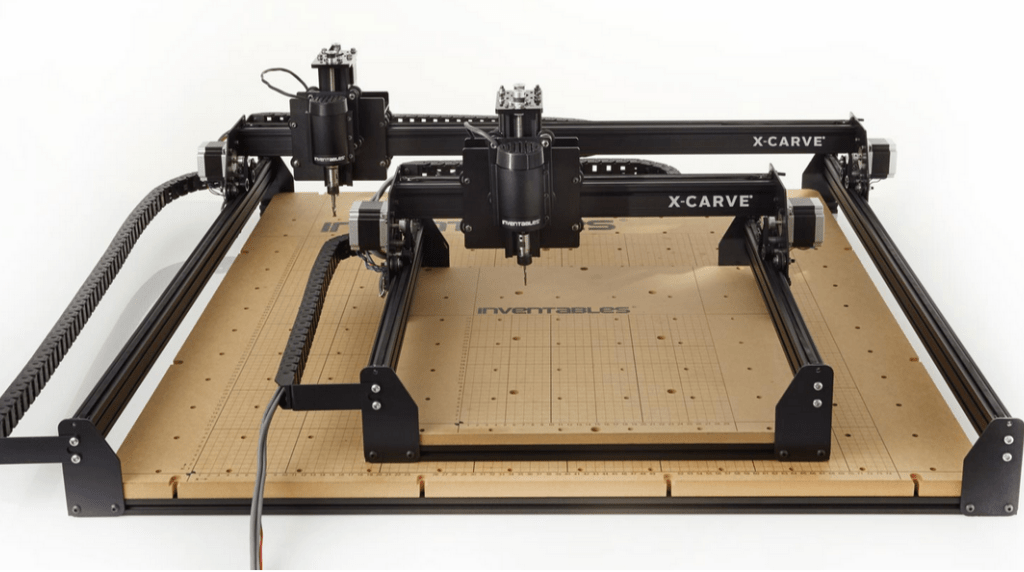 This is best 3D printed with a plastic that is moderately flexible such as PLA. The vice jaws also work wonderfully with hard materials like wood as they can more effectively clamp the piece.
This is best 3D printed with a plastic that is moderately flexible such as PLA. The vice jaws also work wonderfully with hard materials like wood as they can more effectively clamp the piece.
The vice jaws have small indentations on the bottom side. These are meant to house small magnets so that they can be attached and detached from your vice easily. They can also be glued onto the vice. There is really no disadvantage to just affixing these jaws to your vice permanently.
Universal center finder
Woodworking experts are also experts in finding the centerline of everything. A rectangular plank of wood is no problem, but those that have rounded corners require a bit more imagination. In any case, finding the centerline using old-fashioned methods takes a lot of time.
This universal center finder is a handy tool that you can 3D print quickly. The fence of the tool is specifically designed to fit both round and rectangular corners. There is also a small relief on the fence so that it can fit any piece that has burrs. A thin channel runs right down the middle so that you can mark the centerline with a pencil.
A thin channel runs right down the middle so that you can mark the centerline with a pencil.
Dust collection adapters
Dust collection is a crucial part of woodworking. Not only does wood dust get into your respiratory system, but it can also very easily cause a fire or dust explosion. Unfortunately, getting your dust collection hoses to fit with your vacuum units is an impossible task without adapters.
There is a whole slew of 3D printable dust collection adapters out there with different shapes and sizes. The model we are linking to here allows a Makita RT0070CX2J dust shroud to connect with smaller 36-mm hoses. If there’s a mismatch between any of your dust collection equipment, just do a quick search and you might just find the exact adapter you are looking for.
Parametric knobs
By far, this set of parametric knobs will likely be the most useful to any woodworking enthusiast. You can choose to integrate nut knobs for your finished product or use them as adjusters for jigs or create makeshift screwdrivers.
This STL file contains an array of nut knobs, wing nuts, and mini bits for hex and star screwdrivers. Yes, just about all of these parts can be purchased in your local hardware. However, that can get expensive after a while because these plastic nuts can break apart fairly easily. It’s much more prudent to 3D print a bunch of them so you can have one ready when you need it.
These plastic knobs can be made to fit snugly to any fixture by just heating them momentarily. You can also apply some glue for extra bond strength.
Cordless tool wall mount
When you start accumulating lots of power tools, getting them organized becomes more challenging. You will want to put them away but in a manner that still makes them accessible. How about wall mounting them?
This 3D printable bracket fits most of the Dewalt and Makita cordless tools. They can be screwed onto a wall or tacked into a secure pegboard. With a simple and elegant design, this wall mount can help you reclaim horizontal space in your workshop.
3D printed prototypes
A subset of woodworking involves the use of CNC machines. These are typically mills or lathes that can run automatically based on an established algorithm. CNC woodworking is ideal for creating high-precision parts that require detailed etching.
A key characteristic of the CNC process is that it starts with a 3D model. This 3D model is processed in a CNC software platform to generate the code that the CNC machine will follow. This code or algorithm determines the exact movement of the machine’s cutting tools and other moving parts. Some in the industry call this “digital woodworking” and this technology has given way to some of the most impressive woodworking projects.
The beauty of combining CNC machining and 3D printing is that they can both be done using the same 3D model. For those who plan their builds in CAD platforms, 3D printing provides a way to quickly come up with prototypes. Do you want to test how a 4-foot sculpture will look before fully committing to it with wooden parts? Then print a small-scale replica of it over one afternoon.
Those who offer professional woodworking services can greatly benefit from 3D printed prototypes. A 3D printed copy is a great way to review a model with a client for approval or possible revision. Looking at a 3D model is a computer screen simply cannot compare to holding a physical copy in your hands.
More innovative woodworking enthusiasts have been trying to integrate 3D printing and woodworking in different ways. As 3D printers become more sophisticated, it’s not hard to imagine 3D printed projects going hand-in-hand with wood not just as prototypes but as finished parts. This seems to be the direction that the manufacturing industry is headed. Until then, 3D printing could remain the perfect complement to woodworking.
Final thoughts
Woodworking is a respectable craft. It has been around for centuries and has only been made better by modern equipment. Nowadays, wood craftsmen are capable of designs and products that would not have existed ten years ago.
With 3D printing on the rise, there is again an opportunity to advance the possibilities of woodworking.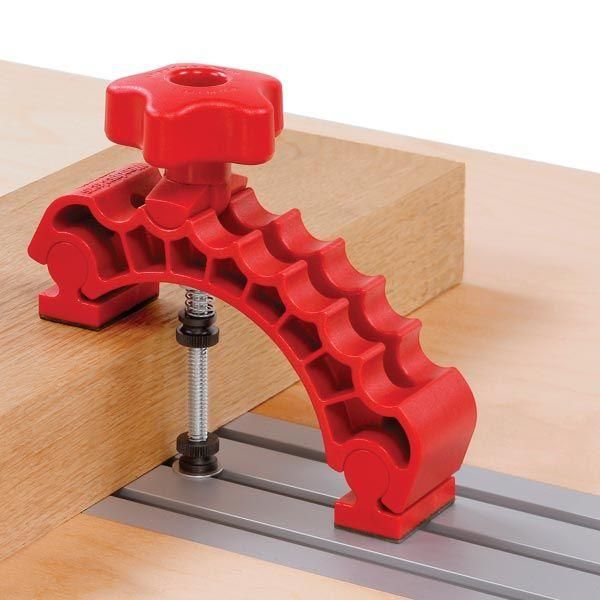 3D printing is not a competitor or alternative to woodworking. In many cases, 3D printed parts can be very useful in creating new possibilities for woodworking. Combining both may just give way to a brand new craft.
3D printing is not a competitor or alternative to woodworking. In many cases, 3D printed parts can be very useful in creating new possibilities for woodworking. Combining both may just give way to a brand new craft.
Warning; 3D printers should never be left unattended. They can pose a firesafety hazard.
3D printed press brake punching tools
Last week, we made 50 parts for customers using printed press brake tooling, which allowed us to produce ordered parts quickly without having to order tooling and wait. All parts produced were to specification and the client was happy to receive their parts so quickly. The customer's part was thin aluminum, so I wanted to see what thicknesses could be formed with these tools, so I decided to develop more tools and test them by bending different thicknesses of steel. nine0005
Note: This article is a translation.
Step 1: Print Options
The most durable tools in this video were printed on a Prusa i3 MK3s 3D printer using standard PLA. I printed 12 perimeters with 20% gyroid infill at 0.2mm layer height.
The tools in my video bend steel up to 3.4 mm thick without significant wear after more than 150 consecutive bends. The force required to bend 10 gauge mild steel (0.134"/3.4mm) at a 1" bend length through a 1" diameter V-die is approximately 0.79tons or 1580 pounds.
Metal forming experts Cincinnati Inc. have tested their 3D printed tools up to 14ga steel and achieved 1000 bends success. Cincinnati also uses PLA for its molding tools, as it is much more rigid than many of the other common materials used in standard FDM printers.
Step 2: Select tool
Download any of these 3D models to get started. I have added each of the tools tested in the video. nine0005
Gooseneck+125R.stp 31 Download
Thin+125R.stp 28 Download
Wide+125R.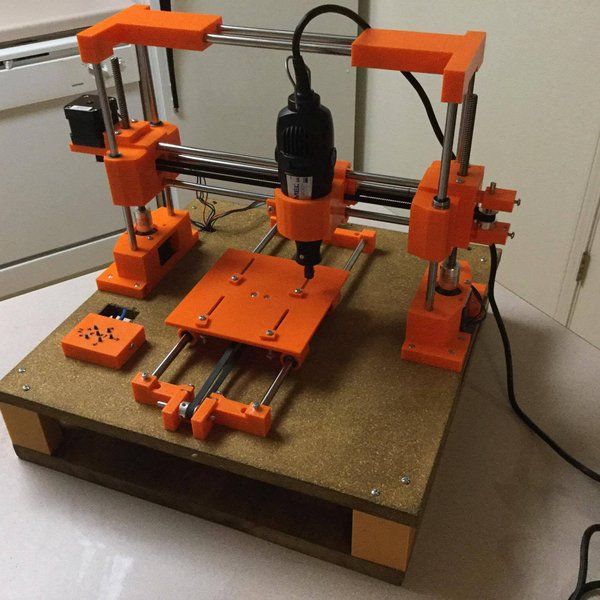 stp 27 Download
stp 27 Download
Step 3: Experiment!
Here are some ideas for other people who don't have access to a press brake to use these forming tools:
- Vise - You can easily adapt my designs or create your own to attach to regular sheet metal bending vises at home.
- Mandrel Press - You can create a forming tool that attaches to a mandrel press.
- Attachments - I develop various radius fixtures that can be attached to existing rigs. This will greatly speed up the printing time. nine0045
Step 4: Learn from the Experts
If you're interested in learning more about what experts in the field have to say about this, check out these two articles: Do you need non-standard plate bending equipment? Print it on a 3D printer! [Part 1] and Benefits of 3D Printed Press Brake Tooling
These articles really sparked my interest in these tools and I'm glad I did them. This process will save my shop a lot of money in the future and, more importantly, reduce lead times for our customers.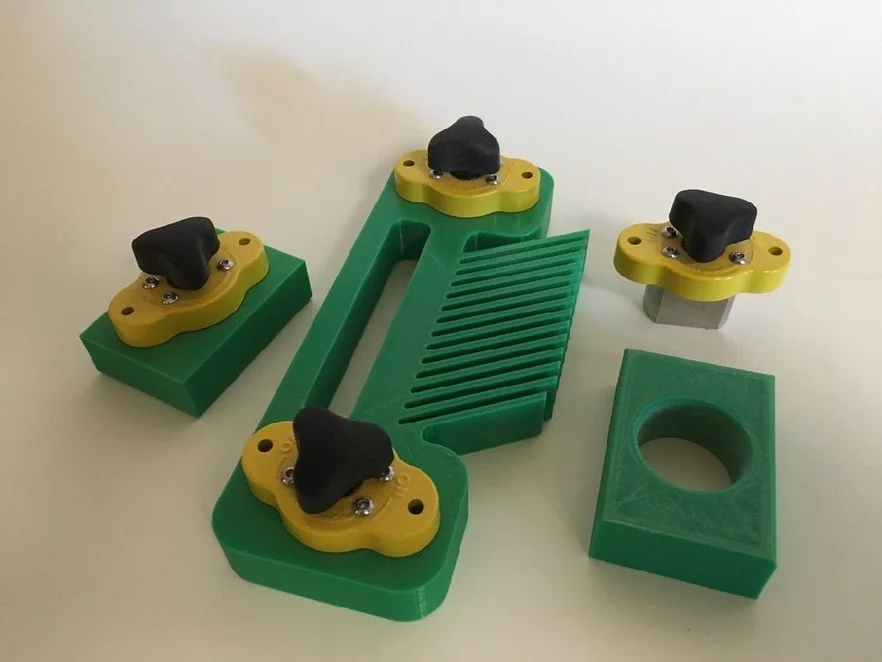 nine0005
nine0005
If you liked the article, please like, share it with your friends and leave comments!
Free 3D File REMIX Woodworking Marking Tool (100% Printed, No Bolts)・3D Printed Design Download・Cults
Creality Ender 3 CR10 Spring Spacers
Free
Ender 3 Box, Easy Install Tray Repair Kit
Free
Ender 3 PSU Strong Support Bracket
Free
Logitech C920 Webcam Mount for Ender 3
Free
MD Mellow BMG Aero Extruder Ender 3 Mount with CPAP Cooling
Free
MD CPAP - Ender 3 CPAP add-on with x4 5015
Free
MD CPAP - βeta
Free
Creality Ender 3 CR10 Bent Spool Adapter
Free
The best files for 3D printers in the Tools category
Multimeter holder (pegboard or wall mounted)
Free
nine0059 Covid-19 Protective Mask - PPE (Personal Emergency Equipment)Free
4mm Platform Clip
Free
Bath Toy Cleaner
Free
Masque de protection COVID-19 FFP2 / protection mask COVID-19 FFP2
Free
Gap tool
Free
Creality CR6-SE drawer insert
Free
Optapi, hive optimization accessory
2.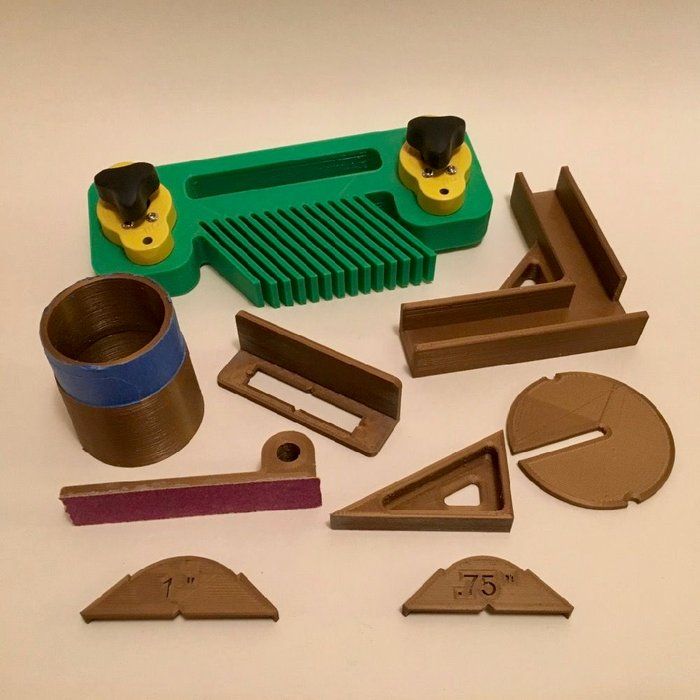 49 €
49 €
Bestsellers in the Tools category
Ender 3, 3 V2, 3 pro, 3 max, dual 40mm axial fan hot end duct / fang. CR-10, Micro Swiss direct drive and bowden compatible. Printing does not require support
1.58 €
ARTEMIS -> Shop for Alligator 2 || 6.5" arrows || Repeating crossbow
6.25 €
PRECISE DIAL INDICATOR 3D PRINT DIY
1.91 €
Phone holder
2.46 €
INDICATOR FOR BETTER BED LEVELING FOR ENDER 3 V2
2.39 €
Generativ Design Y-Filamentsplitter Bambulab AMS-Extern RS-CONCEPTS
2,50 €
Bit holder Spartan 4 mm Hex
1,80 €
Cut-Man - PET bottle cutter with handle!
€3. 49
49
Cooling system Minimus Hotend
€2.72 -10% 2.44 €
Case for Chill Buddy lighter
0,94 €
Quick print stackable parts containers / storage boxes
2.83 €
Fast print ink bottle rack (6 sizes)
2.83 €
Tool holder for 3D printer V3.0
1.05 €
Display holder FLSUN v400
€9.99 -50% 4.99 €
Armadillo - flexible wire conduit
1.69 €
nine0059 Business card embossing system3 €
Do you want to support Cults?
Do you like Cults and want to help us continue our journey on our own ? Please note that we are a small team of 3 people, so supporting us in maintaining activities and creating future developments is very easy.